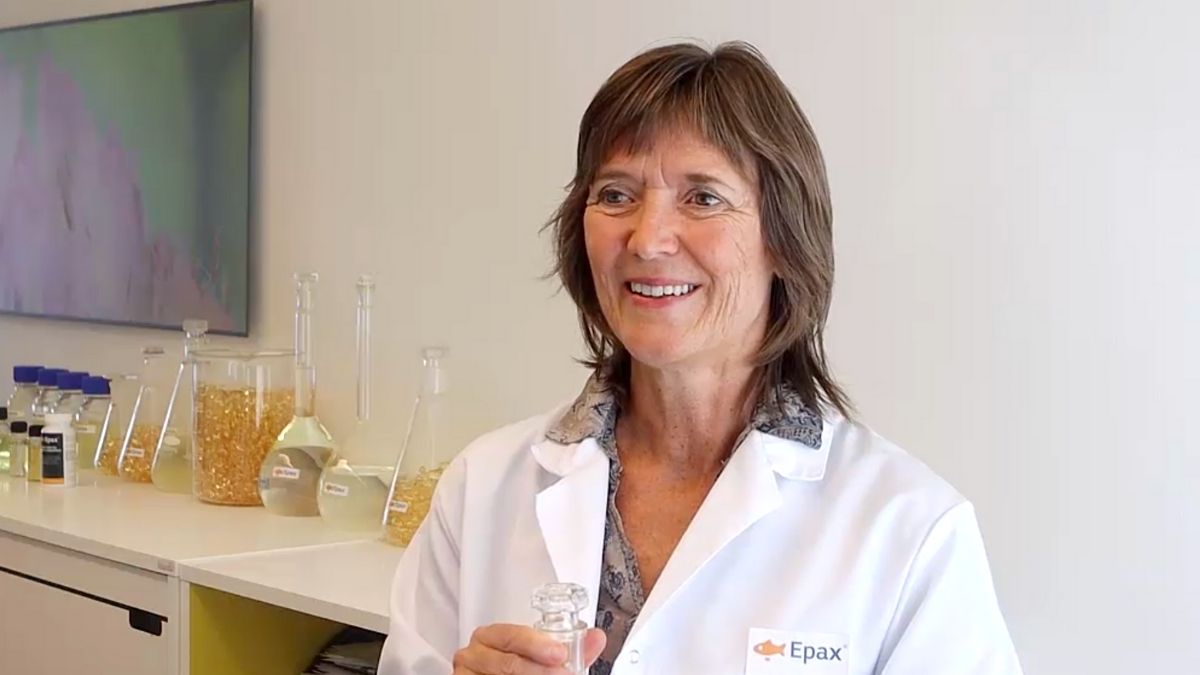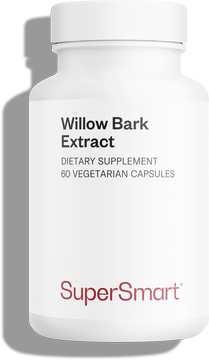Interview: Why is Super Omega 3 the best omega-3 supplement?
What is it that makes the supplement Super Omega 3 so pure, stable and effective? Iren Stoknes, doctor of biotechnology and R&D Manager at Epax® for 13 years, shares the secrets behind its manufacture.

(You can also read the written transcription below the video)
Iren Stoknes : Hello everyone!
SUPERSMART : Super Omega 3 is composed of a fish oil provided by Epax®. As the R&D manager of Epax®, can you explain what makes this oil so qualitative?
I. S. : The fish oil that we make is internationally recognized for its purity. Indeed, purity is a never-ending focus for Epax®: we remove en vironmental and oxidative impurities, and go above and beyond industry standard in that effort.
We have developed a gentle and effective "in house" process for removal of pollutants and for concentration of the important omega3 fatty acids.
We avoid oxidation and monitor quality all the way through processing. With less than 1% oxygen concentration in critical production steps, we are able to halt the oxidation process in the oils, resulting in significantly improved smell and taste.
Our specifications not only meet, but surpass the requirements of the EU and US Pharmacopoeias, the Codex Alimentarius standard, the GOED Monograph and IFOS 5-star rating standards.
Which fishes compose your famous fish oil? And what are your manufacturing processes?
I. S. : Anchovy is the main crude oil source for Epax®. When landed, the fish is processed into fishmeal and crude fish oil. The crude oil is then transported to our Aalesund facility by sea in order to minimize the CO2 footprint.
The first step of refining is purification/conversion which means removal of free fatty acids and environmental pollutants, and conversion of triglycerides to ethyl esters to facilitate concentration.
The second step is concentration, meaning thermal separation of ethyl esters by short path distillation to concentrate omega-3.
In the third step, we perform re-esterification of ethyl esters into triglyceride form by means of enzymes.
Finally, we perform what we call “polishing” meaning removal of stearin, oxidation products and heavy metals, before we add natural antioxidant and fill the product in nitrogen-blanketed drums.
What is the EPA and DHA dosage of the marine omega-3 concentrate, once finalized?
I. S. : Our minimum specification is 300 mg of EPA and 200 mg of DHA per gram of oil, which is approximately twice the EPA and DHA content of the crude oil.
Can you tell us about some Epax® labels and certifications ?
I. S. : Our production facility is cGMP certified and FDA inspected for the production of Active Pharmaceutical Ingredients (APIs) as well as approved by the Norwegian Medicines Agency.
We are also certified by Friend Of the Sea® (FOS), MarinTrust and ISO 14001, which attests that we practice sustanaible fishing and eco-friendly manufacturing.
Can you also remind us of the benefits provided by omega-3s?
I. S. : EPA and DHA are approved for several health claims by the European Food Safety Authority (EFSA).
DHA is thus recognized to contribute to the maintenance of normal brain function, normal vision and normal blood triglyceride levels. EPA and DHA, moreover, both participate to the normal function of the heart and to the maintenance of normal blood pressure.
DHA maternal intake, by the way, is known to contribute to the normal brain and eye development of the fœtus and breastfed infants (1-3).
Many people around the world have been consuming SuperSmart's Super Omega 3 for years. What would you like to say to them?
I. S. : We are very happy that people like the products we make! And I will of course recommend people to carry on to consume the SuperSmart Super Omega 3. It's a very good investment for a healthy life!
References
- EU Register of nutrition and health claims made on foods (v.3.6)
- Ruxton C. Health benefits of omega-3 fatty acids. Nurs Stand. 2004 Aug 11-17;18(48):38-42. doi: 10.7748/ns2004.08.18.48.38.c3668. PMID: 15366399.
- Schwalfenberg G. Omega-3 fatty acids: their beneficial role in cardiovascular health [published correction appears in Can Fam Physician. 2006 Aug;52:952]. Can Fam Physician. 2006;52(6):734-740.
Keywords
1 Days
The products I use are excel·lent
The products I use are excel·lent
ROSAS Josep Maria
9 Days
Delivery is prompt and I never saw a…
Delivery is prompt and I never saw a quality problem with the manufacturing. It is not possible to assess efficacy on a personal basis, since too many factors come into play. Efficacy can only be assessed statistically with a sufficient number of cases.
Roger De Backer
10 Days
I collaborates with the Supersmart…
I collaborates with the Supersmart more than 10 years. Every thing is going good. Quality of the things is good. Delivery comes in time. Five stars definitely !!!
Oleksiy
10 Days
All good
Simple, frictionless site, easy ordering, good delivery updates and execution.
Chris Robbins
12 Days
I feel better
I feel better
Peter Ammann
12 Days
Prompt delivery
Prompt delivery
JAKUB Radisch
14 Days
My new go-to for top quality supplements!
I am buying more and more of my supplements from this superb, high quality company. Cannot recommend it enough. Plus, excellent customer service with a quick, helpful team and speedy deliveries. Highly recommend Supersmart!
Cecilie H.
17 Days
SUPERSMART WHAT ELSE👍
SUPERSMART WHAT ELSE👍
DIEDERLE Christophe
20 Days
Excellent quality products with…
Excellent quality products with innovative formulas, as someone who has been suffering with acid reflux, these supplements have been lifesavers.
Oriana Moniz
20 Days
high quality supplement!
high quality supplement!
GALANT
21 Days
Good service prompt delivery
Good service prompt delivery
Mrs Marcella Reeves
26 Days
I like your clear explanation
I like your clear explanation. And how to make a choice of products for a specific health problem
Ingrid
32 Days
Great product and it arrives quickly.
Great product and it arrives quickly.
SOMMARIVA Gianni
33 Days
Excellent products and fast service.
Excellent products and fast service. What do we need more?
Margarida
37 Days
The variety of products is amazing
The variety of products is amazing, the offers are good and the sending is very fast. I just miss having a bit more of guidance about combinations, possible interactions, etc.
Maria Angeles Verdu





